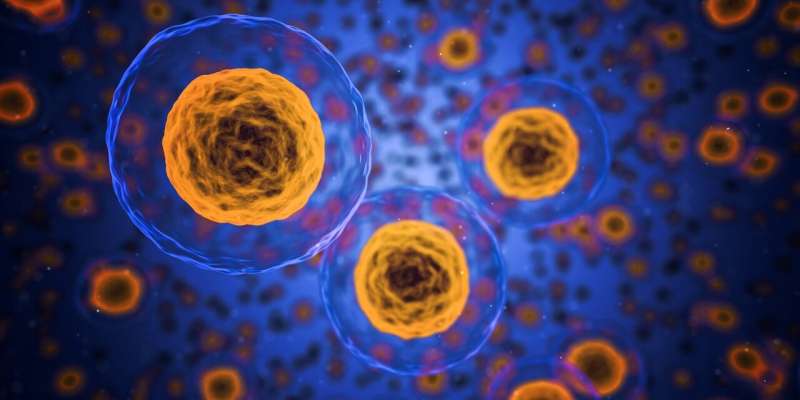This article has been reviewed according to Science X's editorial process and policies. Editors have highlighted the following attributes while ensuring the content's credibility:
fact-checked
trusted source
proofread
Study shows how surface curvature drives cell migration

The curvature of a surface determines the migration behavior of biological cells. They preferentially move along valleys or grooves while avoiding ridges. These findings, published in the journal Proceedings of the National Academy of Sciences with contribution from the Max Planck Institute for Dynamics and Self-Organization (MPI-DS) and the Weizmann Institute of Science, give rise to a model predicting cellular behavior. Such universal principles now allow a better understanding of the migration of immune and cancer cells, paving the way for new treatment options.
Cell migration within the body is a fundamental biological phenomenon. Immune cells constantly scout for pathogens, and cancer cells migrate through the body, causing metastasis. Inside the body, many surfaces, such as tissues, blood vessels, or protrusions, have a curved shape.
"We were able to demonstrate that these curvatures directly affect the movement pattern of cells," explains Eberhard Bodenschatz, director at the MPI-DS. Scientists could show experimentally that cells prefer certain curvatures over others, a phenomenon called "chemotaxis."
To unravel this mechanism, they created a computer model of a vesicle containing active cytoskeletal components used for movement. This structure resembles a biological cell migrating in the body.
"Using this minimal cell model, we systematically explored the curvotaxis mechanism on various curved surfaces," reports Nir Gov from the Weizmann Institute of Science, Israel. "The model cell shows specific migration patterns, for example, where cells move along grooves of a wave-like shape while avoiding motion along the ridges."
This observation gave rise to a new model predicting cell behavior. The predictions of the model were then verified experimentally using several cell types. The scientists thus revealed a universal mechanism for cell motility that applies to many different types of migrating cells.
On a convex or tubular structure, such as the outside surface of a blood vessel, cells tend to move circumferentially around the shape. In contrast, axial forward or backward movement is preferred on concave structures (such as inside a blood vessel).
"Our work highlights how physical principles shape universal behavior, even within the complex world of biology," concludes Bodenschatz.
More information: Raj Kumar Sadhu et al, A minimal physical model for curvotaxis driven by curved protein complexes at the cell's leading edge, Proceedings of the National Academy of Sciences (2024). DOI: 10.1073/pnas.2306818121
Provided by Max Planck Society





















